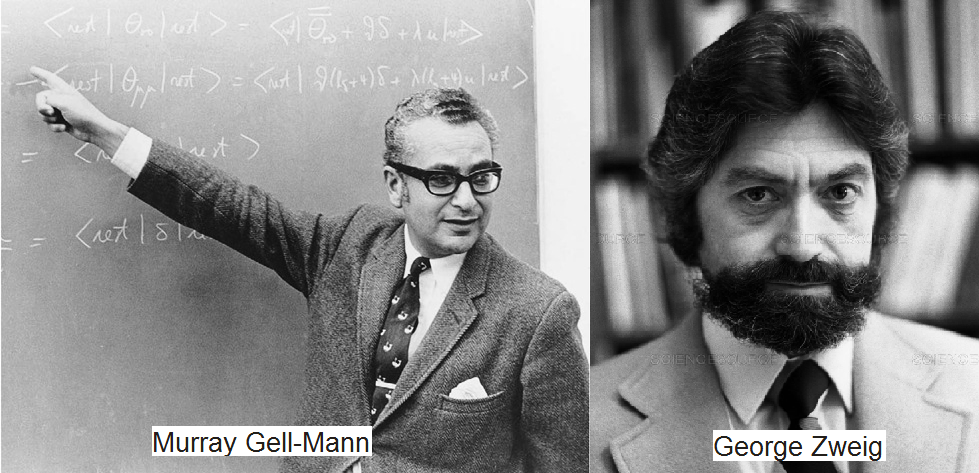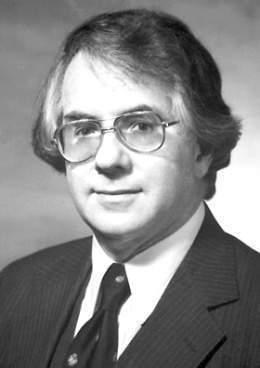Structure of Proton using the SLAC Laboratory
Two major 1969 publications described what happened when high-energy electrons turned into hydrogen atoms. These experiments probed the structure of the proton and triggered an exchange between experimenters and theorists that ultimately solidified the idea that protons, neutrons, and related heavy particles are made of constituent particles called quarks. The experiments were recognized with the 1990 Nobel Prize in Physics.
The quark model arose in 1964, when physicists Murray Gell-Mann, then at the California Institute of Technology (Caltech) in Pasadena, and George Zweig, then at CERN, the European particle physics lab, independently proposed a classification system for the large number of particles in the so-called hadron family. The idea was that each hadron was made up of a different combination of quarks (as Gell-Mann called them), particles with the oddity of having fractional charge. However, collision experiments involving protons failed to shake any of these hypothetical particles loose, recalls Jerome Friedman of the Massachusetts Institute of Technology (MIT). Instead, the results were consistent with a proton that was a featureless blob of charge.

In the late 1960s, Friedman, MIT colleague Henry Kendall, and Stanford Linear Accelerator Center (SLAC) physicist Richard Taylor were part of a team that bombarded hydrogen targets using the new high-energy electron beam at SLAC.

They first studied elastic collisions, in which the electron and proton bounce off each other like ideal billiard balls. The number of scattered electrons detected at a given angle (the scattering rate) decreased with increasing electron energy just as expected if the proton were simply a charged blob.

Although these results were “not very exciting,” as Friedman puts it, the team went on to study inelastic collisions, in which the proton absorbs some of the electron’s kinetic energy internally and blows apart. The experimenters found that for electrons with energies of 7 to 17 giga-electron-volts, the scattering rate was 10 to 100 times greater than the prediction for a featureless proton structure.
Around the same time, SLAC theorist James Bjorken made predictions of the electron-proton interaction using current algebra, a mathematical technique that Gell-Mann adapted in an early attempt to understand the behavior of quarks. Bjorken based his predictions on the two experimental parameters that characterize inelastic collisions: the electron kinetic energy absorbed internally by the proton and the momentum transferred from the electron to the proton. Bjorken found that the scattering rate should decrease relatively slowly for increasingly large electron energies, according to an expression (called a scaling law) that, surprisingly, depended only on a simple combination of the two parameters.

Remarkably, the scattering results fit nicely with Bjorken’s prediction, but “we didn’t understand what scaling implied,” Friedman says. Richard Feynman of Caltech then learned of the results. He realized that because of special relativity, an electron traveling close to the speed of light would see a stationary proton flattened into a pancake-shaped object. He then imagined that this proton disk contained some number of noninteracting constituent particles, which he called partons. From this model he was able to obtain the same scaling law that Bjorken had laboriously derived from current algebra.
With the new SLAC electron accelerator, the intention was to continue and, hopefully, improve of Robert Hofstadter (for his pioneering studies of electron scattering in atomic nuclei and for his thereby achieved discoveries concerning the structure of the nucleons) investigations of the charge structure of the proton. Following initial experiments in which the research team studied “elastic” collisions without finding anything exciting, the part of the team which included this year’s Nobel Laureates started to investigate “inelastic collisions“. In this, the SLAC-MIT experiment, the scattering angle and energy loss of the electron after the collision were observed: these together give a measure of whether the collision really is inelastic, and also of the degree of inelasticity. By selecting electrons, which scattered at increasingly large angles and with increasing energy losses (corresponding to photons of decreasing wavelengths), the research team analysed deeper and deeper layers of the proton.
Earlier investigations of the proton at low energies had shown that this ought to be “soft” with a relatively even internal distribution of its electrical charge. This year’s Laureates therefore had reason to believe there would be a decline in the probability of photon absorption (low number of events). But they found instead a high probability level (many events), i.e. there seemed to be something small and “hard” inside the proton.
Thus the new investigations gave the surprising result that the electrical charge within the proton is concentrated to smaller components of negligible size.
This unexpected discovery by the 1990 Laureates was noted immediately by certain skilled theoreticians, chiefly R.P. Feynman and J.D. Bjorken. The result was first interpreted within the framework of what is termed the parton model, which, however, soon came to be identified with the quark model. Very thorough analysis of the experimental results also gave the first hint of the existence of the neutral “glue particles”, later to be called gluons.
In the first of the two 1969 papers by Friedman and his colleagues, the team described their experiments. In the second, they evaluated the data in the context of various theories of the time, including quarks, partons, and Bjorken’s and Feynman’s scaling results, along with several other ideas that soon lost favor. Further experiments of the same type—which became known as deep inelastic scattering experiments because they looked deep within hadrons—eventually confirmed that there were three particles inside the proton, with fractional charges. But definitive identification of the observed partons with the theoretical quarks had to await further work to resolve a contradiction: Quarks were evidently so tightly bound that they could not be pried out of hadrons, while the partons were assumed to rattle around freely. The 1973 theory of asymptotic freedom solved that problem and received the 2004 physics Nobel Prize.
Friedman, who won the 1990 Nobel Prize in Physics with Kendall and Taylor, describes their story as one “in which theory and experiment intermix.” Bjorken says that the interpretation of his scaling law as evidence for constituent particles in the proton “was there as an option, but a chancy one. It did not really come into its own until post-Feynman.” Friedman agrees that Feynman turned confusion into clarity, but he calls Bjorken the “unsung hero” of the tale.
This experience with protons were actually cobbled together from bizarre entities, dubbed "quarks," whose properties are unlike anything seen in our world. Unlike protons, quarks cannot be separated from their fellows and studied in isolation; despite this, our understanding of the universe is built on their amply documented existence.
HIGH-ENERGY INELASTIC e-P SCATTERING AT 6 AND 10'.OBSERVED BEHAVIOR OF HIGHLY INELASTIC ELECTRON-PROTON SCATTERING.SLAC journal.Probing the Internal Structure of the Proton.Proton structure overview.The Discovery of Quarks.40th SLAC summer institute - institutional presentation



REFERENCES
American Physical Society. Available in: https://physics.aps.org/articles/v7/81. Access in: 07/10/2018.
California Institute of Technology. Available in: http://www.caltech.edu/news/50-years-quarks-43351. Access in: 07/10/2018.
Nobel Prize. Available in: https://www.nobelprize.org/prizes/physics/1990/9594-the-slac-mit-experiment/. Access in: 07/10/2018.


























0 comments
Sign in or create a free account